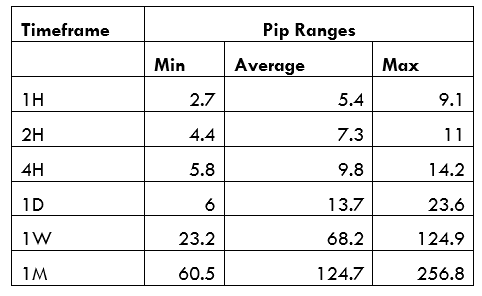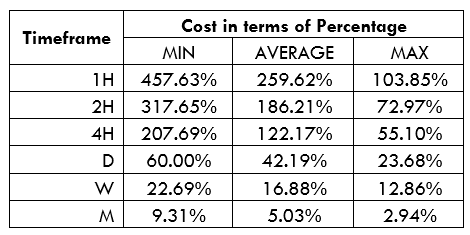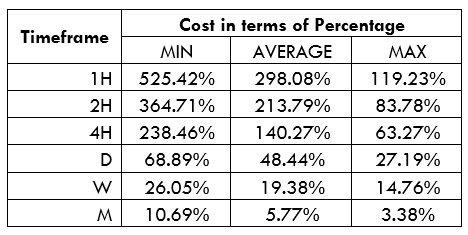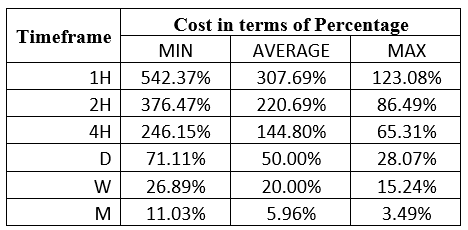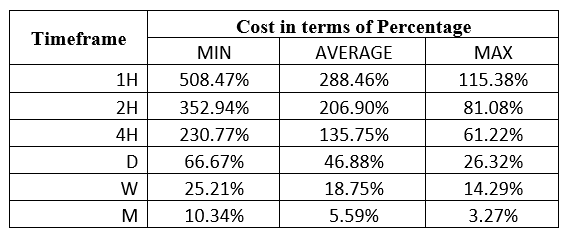Introduction
The AUD/TWD is an exotic currency pair with the AUD representing the Australian Dollar, and the TWD is the Taiwan Dollar. Such exotic pairs experience high volatility in the forex market. In this pair, the AUD is the base currency, while the TWD is the quote currency. That means that the exchange rate of the AUD/TWD is the amount of TWD that can be bought by 1 AUD. If the exchange rate of the AUD/TWD pair is 20.091, it means that you can exchange 20.091 TWD for 1 AUD.
AUD/TWD Specification
Spread
The spread in forex trading represents the difference between the price at which you can buy a currency pair when going long and the price at which you can sell the pair when going short. The spread for the AUD/TWD pair is – ECN: 24 pips | STP: 29 pips
Fees
Holders of ECN type accounts are typically charged a fee for every position they open. This fee depends on the size of the positions and the broker. Traders with STP accounts usually don’t get charged trading fees.
Slippage
If your broker delays executing your trade or if the market is highly volatile, you will notice a difference between the price you placed on your order and the execution price. This difference is slippage.
Trading Range in the AUD/TWD Pair
When trading forex, you will notice that a currency pair fluctuates over time. The trading range shows the minimum, average, and maximum variation in pips over different timeframes. By analysis of the trading range, we can determine the potential profit from trading a particular pair across various timeframes.
The Procedure to assess Pip Ranges
- Add the ATR indicator to your chart
- Set the period to 1
- Add a 200-period SMA to this indicator
- Shrink the chart so you can determine a larger period
- Select your desired timeframe
- Measure the floor level and set this value as the min
- Measure the level of the 200-period SMA and set this as the average
- Measure the peak levels and set this as Max.
AUD/TWD Cost as a Percentage of the Trading Range
To establish the Percentage of the trading range for CAD/TWD, we will express the total trading costs for both ECN and STP accounts as a percentage of the trading range above. This analysis will show us the true costs of trading the AUD/TWD pair across different timeframes, which will aid in determining the best timeframe to trade.
ECN Model Account costs
Spread = 24 | Slippage = 2 | Trading fee = 1 | Total cost = 27
STP Model Account
Spread = 29 | Slippage = 2 | Trading fee = 0 | Total cost = 31
The Ideal Timeframe to Trade AUD/TWD Pair
From this analysis, we can tell that as the timeframe becomes longer, the trading costs become lower. For both accounts, the highest trading costs are at the 1H timeframe, which coincides with the lowest volatility of 2.7 pips. The lowest trading costs are at the 1-month timeframe coinciding with when volatility is highest at 256.8 pips.
Overall, we can also notice that the trading costs reduce when volatility changes from minimum to maximum across all timeframes. Therefore, traders of the AUD/TWD pair can reduce their trading costs by trading longer timeframes or trading when volatility approaches maximum. Furthermore, using forex limit order types can remove slippage costs.
Here’s an example.
ECN Account Using Limit Model Account
Total cost = Slippage + Spread + Trading fee
= 0 + 24 + 1 = 25
When the slippage costs are eliminated, the trading costs for the AUD/TWD pair drop. In this case, the highest cost dropped from 457.63% to 423.73%.



